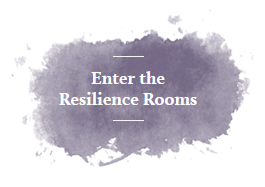In today’s fast-paced world, stress and anxiety have become common companions in our daily lives. According to the American Psychological Association, nearly 77% of adults experience physical symptoms of stress regularly (APA, 2020). Mindfulness, a practice rooted in ancient traditions, has gained recognition as a powerful antidote to stress and a means of cultivating inner peace and mental clarity (Kabat-Zinn, 2013). Central to mindfulness practice are mindful mantras—short, meaningful phrases that ground us in the present moment, helping reduce anxiety, enhance emotional resilience, and foster self-compassion (Neff & Germer, 2018).
Understanding Mindful Mantras
Mindful mantras are phrases repeated silently or aloud to focus attention, regulate emotions, and cultivate a state of calm awareness. Unlike affirmations, which emphasize personal goals, mantras are often simpler and designed to redirect the wandering mind back to the present moment (Salzberg, 2010). Research indicates that regular use of mindfulness-based techniques, including mantra repetition, can significantly reduce symptoms of depression, anxiety, and stress (Goyal et al., 2014).
Implementing Mindful Mantras in Daily Life
Integrating mindful mantras into daily routines is practical and requires minimal time. Here are some strategies to effectively use mindful mantras:
- Begin the Day with Intention: Start each morning with a mantra that sets a positive tone for the day. Phrases like “Today, I choose peace” or “I am present and calm” can anchor your day in mindfulness. According to Thich Nhat Hanh, mindfulness in the morning sets a foundation for greater emotional regulation and happiness throughout the day (Hanh, 1999).
- Pause During Stressful Moments: When confronted with stress or negative emotions, take a short pause. Repeat a calming mantra like “Feelings come and go,” “My feelings remind and connect me to what’s important to me” or “I am safe and grounded.” Such pauses have been shown to reduce cortisol levels and activate relaxation responses in the body (Benson, 2000).
- End Your Day with Gratitude: Incorporating a nightly gratitude mantra like “I am thankful for another day of life” or “I am thankful for ______” enhances emotional resilience and well-being. Emmons and McCullough (2003) found that regular gratitude practices significantly improved emotional and physical health.
Guided Imagery: Enhancing the Power of Mindful Mantras
Another complementary mindfulness practice is guided imagery—a structured form of visualization that engages the senses to evoke peaceful, calming scenarios. Guided imagery involves imagining a relaxing place or situation in vivid detail, utilizing sensory experiences like sight, sound, smell, and touch to deeply relax the body and mind (Rossman, 2000).
Combining guided imagery with mindful mantras amplifies the effectiveness of both techniques, creating a profound sense of inner tranquility and emotional stability.
Practical ways to integrate guided imagery with mindful mantras include:
Visualization Experiences: Set aside brief moments in your day to visualize calming scenes—like walking along a peaceful beach or relaxing in a lush garden—while gently repeating a soothing mantra.
Enhanced Mantra Repetition: When repeating your chosen mantra, visualize the associated imagery vividly. For example, if your mantra is “I am safe,” visualize yourself in a secure, peaceful place.
Scientific studies confirm the positive impact of guided imagery on psychological well-being, showing significant reductions in stress, anxiety, and pain management when practiced regularly (Menzies et al., 2014).
4 Powerful Mindful Mantras for Everyday Use
1. “I Am Here, I Am Now”
The mantra “I am here, I am now” emphasizes being fully present. Neuroscientific research suggests that mindfulness practice rewires neural pathways associated with attention, reducing habitual patterns of mind-wandering (Hölzel et al., 2011).
2. “Breathe in Calm, Breathe Out Stress”
Breath-based mantras synchronize breathing patterns with calming phrases, fostering physiological and emotional calm. Breath awareness techniques significantly reduce stress responses, promoting relaxation and mental clarity.
3. “I Am Enough”
This mantra cultivates self-compassion and combats feelings of inadequacy. Kristin Neff’s research on self-compassion shows that acknowledging personal worth through mindful self-affirmations enhances emotional resilience and psychological health (Neff, 2011).
4. “Let Go, Let Be”
The mantra “Let go, let be” encourages acceptance of the current moment without judgment or resistance.
Practical Steps to Create Your Own Mantra
Creating a personalized mantra enhances its effectiveness. Consider these steps:
Reflect on Personal Challenges: Identify the emotions or thought patterns you frequently face.
Formulate Positive Counterstatements: Create short, affirmative statements that address these emotions directly.
Keep It Simple: Mantras should be brief, easy to remember, and soothing.
The Impact of Consistent Practice
Regular use of mindful mantras not only alleviates immediate stress but can also foster lasting psychological changes. Studies consistently report improvements in emotional intelligence, enhanced cognitive flexibility, and better emotional regulation among individuals who regularly engage in mindfulness practices (Davidson & Begley, 2012).
Mindful Living as a Lifelong Journey
Mindful mantras provide simple, powerful tools for navigating life’s challenges with greater calmness and clarity. By integrating these mantras into everyday life, you can build resilience, cultivate self-awareness, and foster emotional well-being. Mindfulness, supported by regular mantra practice, becomes more than a technique—it evolves into a way of life, enriching your relationships, deepening your experiences, and guiding you toward inner peace.
To allow for balance and integration of your mantras, listen to the Chakra Guided Meditation led by me. Please subscribe to my YouTube channel for more interviews and guided meditations.
Blog as published in Psychology Today.


